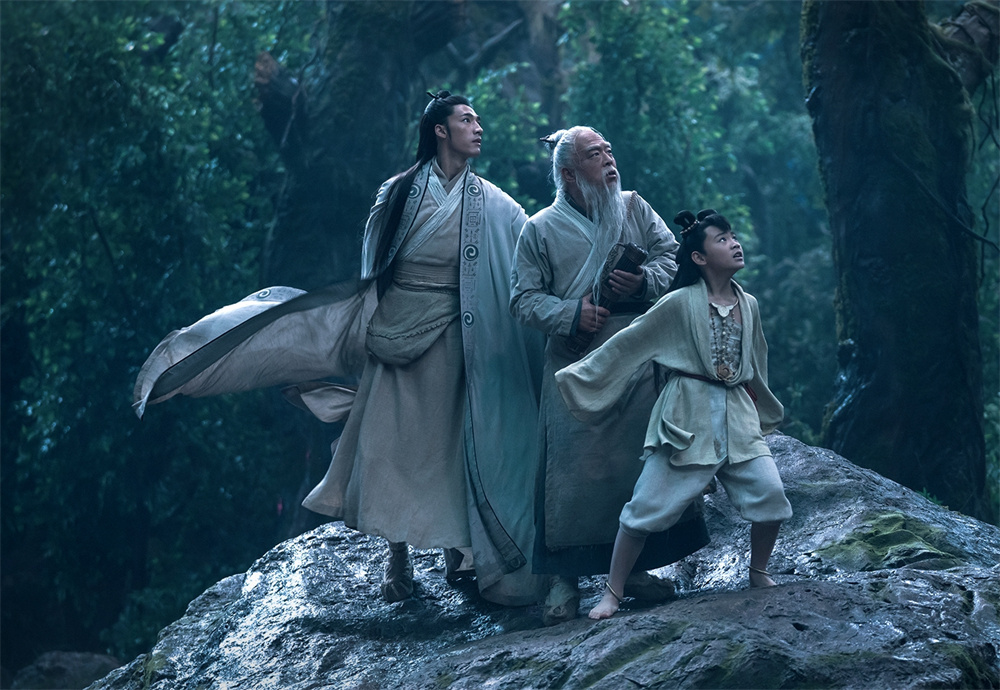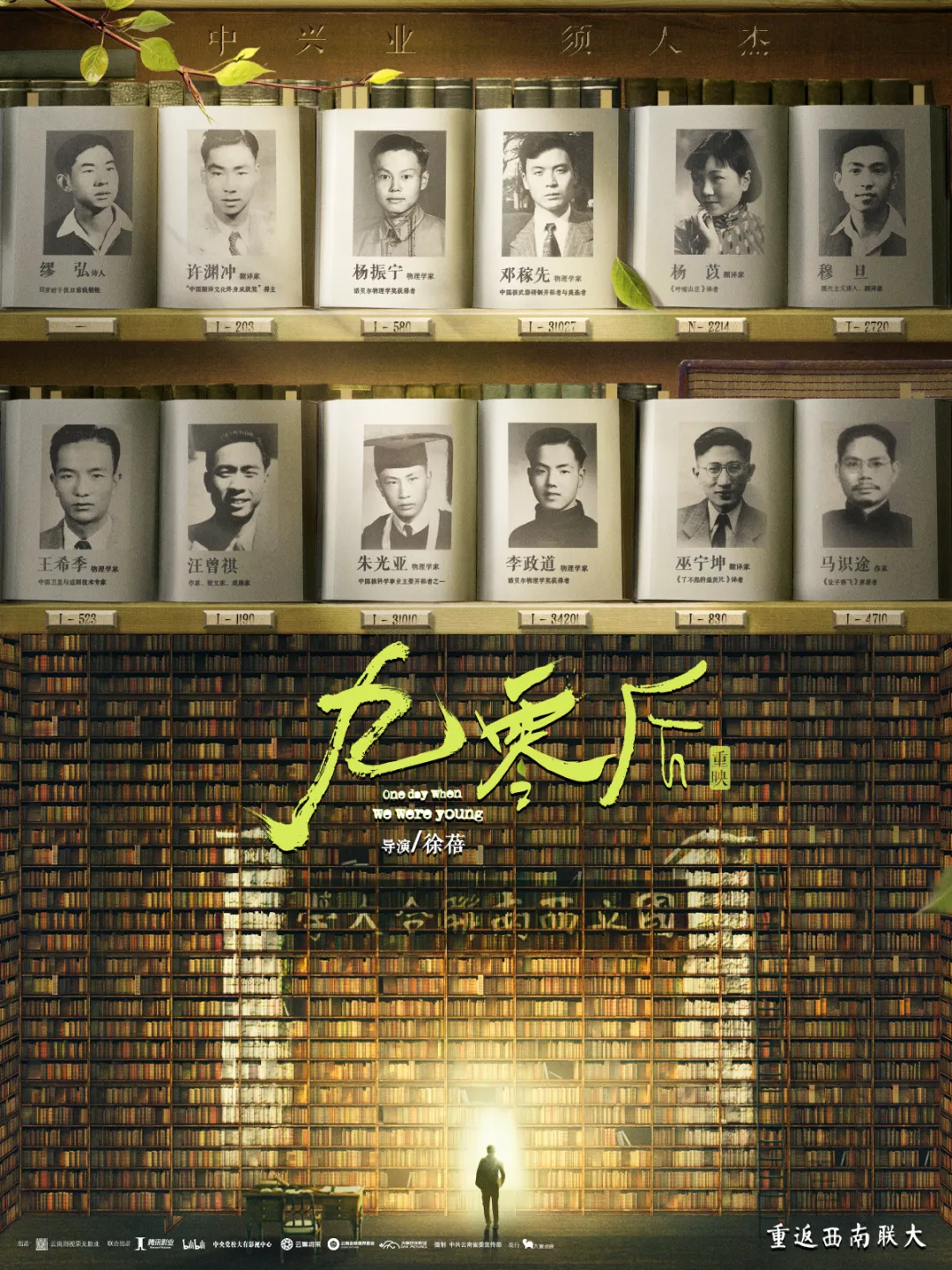
In recent years, with the advanced development of the Chinese film industry, ancient mythological themes have gradually shown genre advantages that have both cultural expression and technical expression.
"The Romance of the Gods" (commonly known as "The Legend of the Gods"), a long fictional novel about gods and demons in the Ming Dynasty, has become a resource library and source of creativity for film creation because of its magnificent world view, legendary nature and sense of fantasy. From "The Legend of the Gods" (2016), to the animated films "Nezha: The Devil Boy Comes to the World" (2019), "Jiang Ziya" (2020), to the opening chapter of Wu Ershan's "Fengshen Trilogy", "Fengshen Chapter" Part One: Chaoge Fengyun" (2023), a number of "Fengshen" themed movies have been released one after another, significantly accumulating the commercial potential of the "Fengshen" IP. Although there are gaps in the production levels of different films and mixed reviews from audiences, it is undeniable that the exploration of narrative and aesthetics in the "Fengshen" IP film is still a useful practice for the creative transformation and innovative development of China's excellent traditional culture, and enhances the The cultural charm and appeal of ancient Chinese myths in the current media audio-visual environment.
Narrative strategy: character reshaping, story extension and value reinterpretation
The current series of "Fengshen" IP movies are based on the stories and characters in "Fengshen Yanyi", and are derivative creations through film and television adaptations, retaining the core story line and character relationships of the original work. The more obvious differences are mainly reflected in the reshaping of characters, the extension of side stories, and the contemporary reinterpretation of cultural values.
The reshaping of classic characters is the driving force behind the creative transformation and innovative development of the "Fengshen" story. For example, "Yang Jian" (Erlang God) is not an original character in the novel "The Romance of the Gods". The belief in Erlang God was formed in the Tang Dynasty, and there are many references to it in the literary works "Yi Jian Zhi" and "Journey to the West" as early as the Song and Yuan Dynasties. In the description of this role, the "Erlang God" at that time was portrayed as a "great man" wearing a military uniform and golden armor. In the current "Fengshen" IP movies, "Yang Jian" is mostly reshaped into a new image of being handsome, passionate, righteous, and clever. Such changes are undoubtedly closer to the public's general aesthetics and cultural imagination, thereby enhancing the audience's understanding and acceptance of the narrative plot.

Yang Jian, Jiang Ziya, Nezha
For another example, "Fengshen Part 1: Chaoge Fengyun" presents a different "Daji" character from the past. In terms of appearance, the Russian-Mongolian mixed-race actor Naran fully interprets the demon, charm, spirit and strangeness in the traditional national memory of the "witch concubine who brought disaster to the country". However, she deliberately removed or obscured it in the background setting and narrative function of the character. Its "disaster to the country" aspect. The strategy of reshaping the character of "Daji" is to deal with contradictions and metaphors. Through the struggle between human nature and demon nature in her heart, the hidden meaning under the narrative surface is revealed.
The extension of the side story of "Feng Shen Bang" is the cornerstone and root of building the "Feng Shen Story World". In addition to the main story of the original "Fengshen Yanyi", which focuses on the "Fengshen List" to divide the 365 righteous gods in order to stabilize the order of heaven and maintain the peace of the three realms of heaven and earth, there are many side stories, including many characters and plots. For example, the two movies "Nezha: The Devil Boy Comes into the World" and "Jiang Ziya" respectively tell the story of how Nezha broke through the fate and stereotypes of the "magic pill", and how Jiang Ziya became a "real god" after being demoted to the human world. These side stories about the fate of individual characters have greatly enriched the narrative background of the main plot of "The Romance of the Gods" and become important supplements of details. Through the extension of the side story, the audience can also better understand the motivations and changes of the characters, and perceive the growth and arc. This not only increases the narrative level and connotation of the story, but also enriches the emotional and value expression of the story. At the same time, fully extending the side story also injects vitality into the sequel creation, serialization and cross-media development of commercial movies.
The current reinterpretation of the cultural value of traditional stories is a key path for the creation and dissemination of the "Fengshen" IP film, which can promote the historical expression of traditional culture and cross-cultural exchanges. The traditional "Feng Shen" story is based on the land of Kyushu, unfolding a grand and magnificent mythical world, incorporating narrative elements such as war, strategy, and emotion. What is worth discussing is that stories about "separation of forces and enfeoffment of power" are always easy to get good results, but they no longer seem to be in line with the interests and preferences of today's audiences. Director Wu Ershan believes that "a core of traditional Chinese values is the emphasis on family and ethics." Therefore, in the movie "Fengshen Trilogy", he focused on shaping the "Xibohou Family" of Ji Chang, Ji Fa and Boyikao and the "Yin Shang Family" of Yin Shou and Yin Jiao, thereby weakening the traditional camp , the division between forces, and the discussion of the relationship between father and son through Ji Fa's "proton" identity and role growth. The film thus conveys a humanistic value concept - those who are co-conspirators are the "co-owners of the world", rather than the holders of violence and power. As a result, the classic story has gained widespread emotional resonance and popularity in the current mainstream film market. cultural consensus.

Ji Chang, Ji Fa and his son
The "essence", "qi" and "spirit" in the aesthetic expression of the "Fengshen" IP film
Through the reinterpretation of mythological elements, historical background and cultural symbols, as well as the re-examination of traditional values, the "Fengshen" IP film not only glows with the charm of Chinese culture, but also matches the audience's aesthetic taste, demonstrating the creative transformation of traditional culture and innovative development of "essence", "qi" and "spirit" in aesthetic expression.
Essence, using material reality to access virtual wonderland, that is, through the fine production and technological performance of film industry, it creates an illusory "world of gods" that is realistic and has a strong audio-visual realism. "Legend of the Gods" released in 2016 showed the high level of special effects in Chinese-language films at that time. The film's post-production special effects were jointly created by top special effects companies in China, the United States and South Korea, highlighting the fantasy of magnificent architecture and mysterious natural environments. The film uses top special effects technology to create a mythical world, allowing the audience to experience the wonderland immersively; then through large-scale buildings, gorgeous palaces, mysterious natural environments, etc., it creates a sense of audio-visual complexity, interweaving and mystery; finally, the character image The exquisiteness in costume design makes the characters vivid and natural in the imaginary world.
Qi, using classical oriental aesthetics to highlight the charm of Chinese culture. The story of "Fengshen" is set in the Shang and Zhou dynasties. In terms of audio-visual performance, it integrates bronze culture and the beauty of landscapes. In terms of spiritual expression, it uses overhead mythology to construct an epic sense and internalizes Confucianism, Buddhism and Taoism culture. This expression of the charm of China is A fusion based on the national imagination of Eastern aesthetics. The rough and heavy beauty of Chaoge City is like this, as is the exquisite beauty of bronzes and costumes; the simplicity of the beams and foundation stones used to build the deer platform is like this, and the halo and ethereal fantasy of the Wonderland are also like this.
God, using "humanistic spirit" to bridge classical mythology and mainstream values. The stories of "conferring gods" in literary works interweave the complex relationships between humans, gods, demons, spirits, and Taoists, and their imagination is unparalleled so far. Therefore, in the film and television adaptation process of the "Feng Shen" IP, injecting mainstream cultural values on the basis of classical mythology is an effective way to communicate tradition and modernity, and connect mythology and reality. This new relationship makes the film more humanistic and contemporary. It can explore the meaning of human nature, society and spirituality through the work with the audience, and give new vitality to traditional mythological stories. "Nezha: The Devil Boy Comes into the World" is the "Feng Shen" IP film with the best box office and reputation so far. As an animated film rather than a live-action film, it is a model of winning with "gods". Relying on the spiritual expression of "I have no control over my destiny", the movie gives new vitality and modern concepts to traditional mythological stories, allowing them to be continued and passed down in contemporary culture.
All in all, taking the "Feng Shen" IP film as an example, the exploration and development of film and television creations with Chinese mythological themes indicate that new types of stories and expression paradigms are gradually forming among the many plans for cultural communication in the new era.
(This article was published on Guangming.com - Literary Review Channel on October 16, 2023. The author Liu Xuehua is a postdoctoral fellow at the School of Journalism and Communication at Tsinghua University and an assistant researcher at the Film and Television Communication Center of Tsinghua University. This article is for the National Social Science Major Project "Audiovisual Quality Promotes China's Excellent Tradition" Cultural Creative Transformation and Innovative Development", project number 22ZDA083 phased results)


